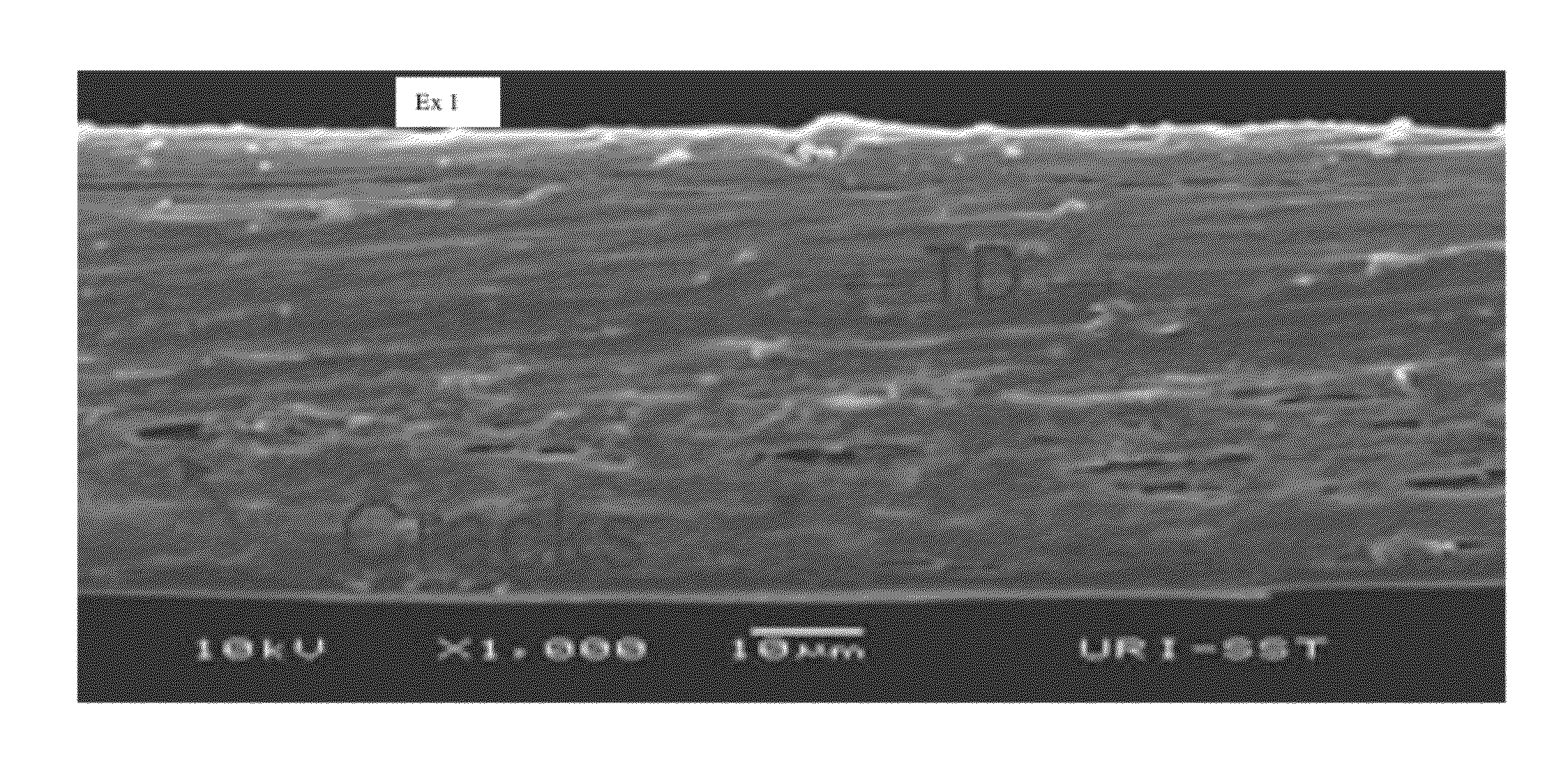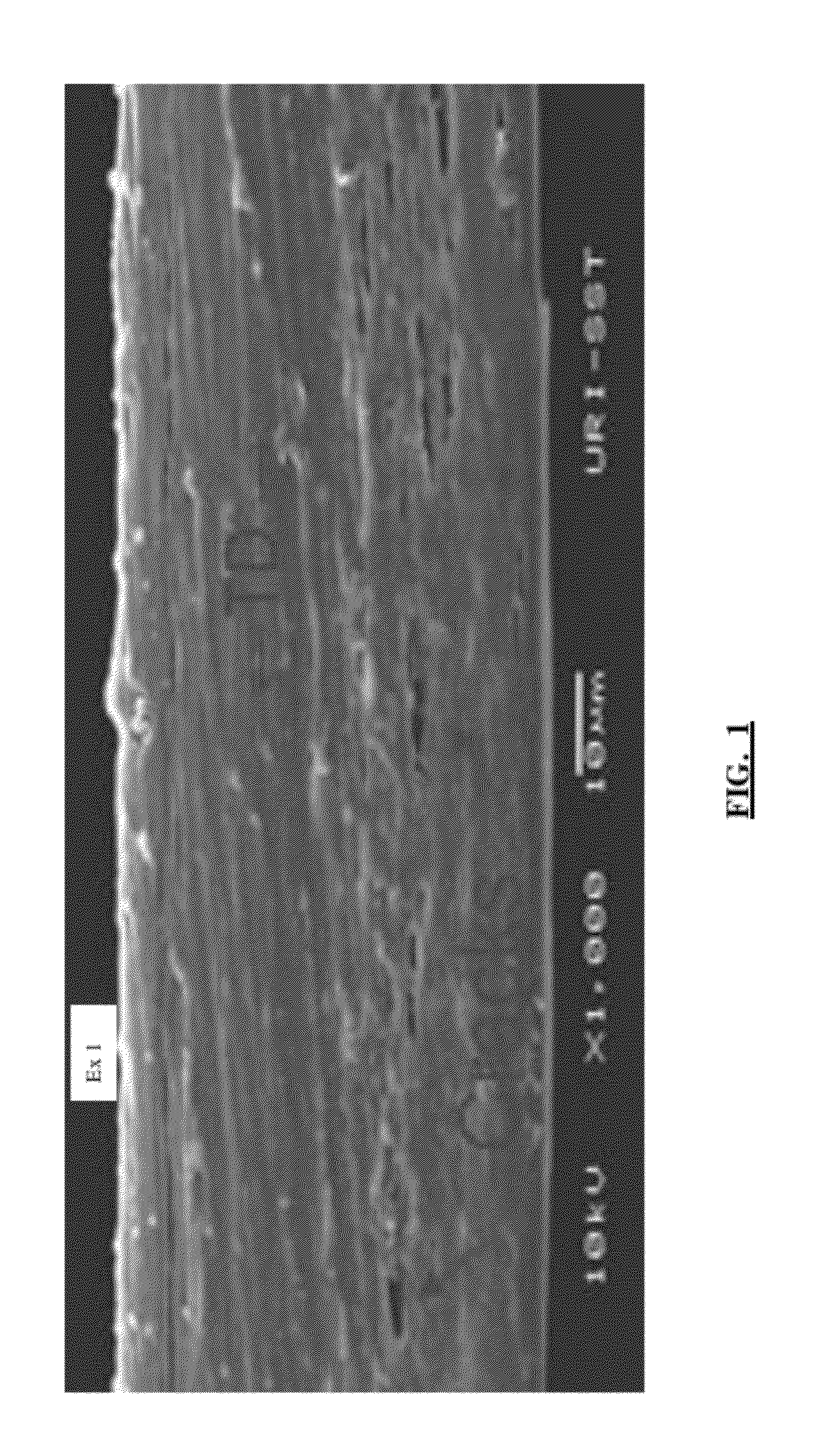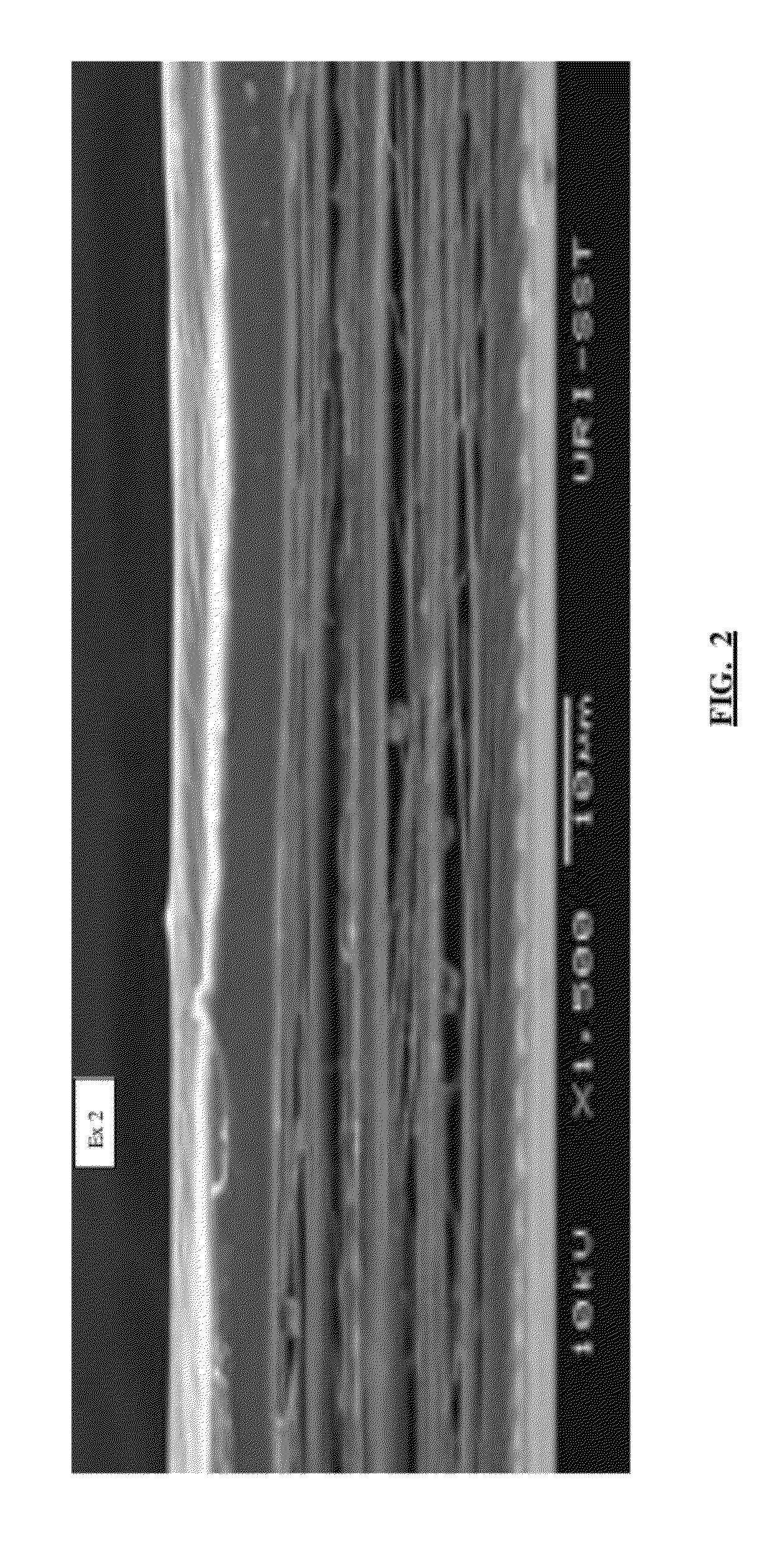Method to produce matte and opaque biaxially oriented polylactic acid film
a biaxial orientation, polylactic acid technology, applied in film/foil adhesives, packaging foodstuffs, packaged goods types, etc., can solve the problems of film breakage, low productivity and cost, and limited biaxial orientation rate of bopla film, so as to reduce internal stresses and minimize shrinkage
- Summary
- Abstract
- Description
- Claims
- Application Information
AI Technical Summary
Benefits of technology
Problems solved by technology
Method used
Image
Examples
example 1
[0064]A 2-layer coextruded biaxially oriented PLA film was made using sequential orientation on a 3.0 meter wide tenter frame line, including a core layer substantially of Natureworks® 4032D at about 64 wt % of the core layer and dry-blended with about 30 wt % of Natureworks® 4060D and about 4 wt % of DuPont Biomax® 120 ethylene-acrylate copolymer as a process aid for high transverse orientation. Also dry-blended into the core layer was an amount of antiblock masterbatch (called “PLA10A” made by the inventors) made by melt-extruding Natureworks® 4060D with Silton® JC-30 nominal 3 μm particle size spherical sodium calcium aluminum silicate antiblock at a masterbatch loading of 5 wt % JC-30 of the masterbatch. About 2 wt % of this antiblock masterbatch PLA10A was added to the core layer for a nominal loading of about 1000 ppm JC-30 in the core layer. The coextruded heat sealable skin layer includes substantially of Natureworks® 4060D at about 94 wt % of the skin layer. PLA10A antibloc...
example 2
[0066]The process of Example 1 was repeated except that the machine orientation rate was changed to 2.7×.
example 3
[0067]The process of Example 1 was repeated except that the machine orientation rate was changed to 3.0×.
PUM
| Property | Measurement | Unit |
|---|---|---|
| wt % | aaaaa | aaaaa |
| wt % | aaaaa | aaaaa |
| thickness | aaaaa | aaaaa |
Abstract
Description
Claims
Application Information
 Login to View More
Login to View More - R&D
- Intellectual Property
- Life Sciences
- Materials
- Tech Scout
- Unparalleled Data Quality
- Higher Quality Content
- 60% Fewer Hallucinations
Browse by: Latest US Patents, China's latest patents, Technical Efficacy Thesaurus, Application Domain, Technology Topic, Popular Technical Reports.
© 2025 PatSnap. All rights reserved.Legal|Privacy policy|Modern Slavery Act Transparency Statement|Sitemap|About US| Contact US: help@patsnap.com



